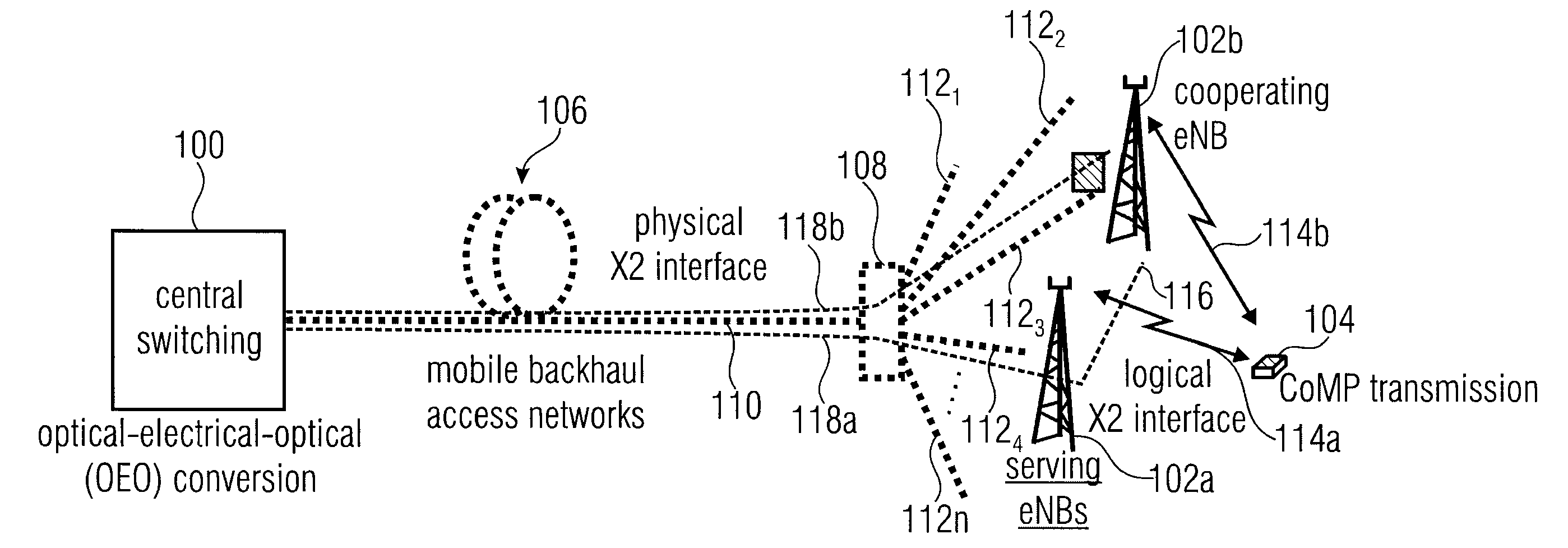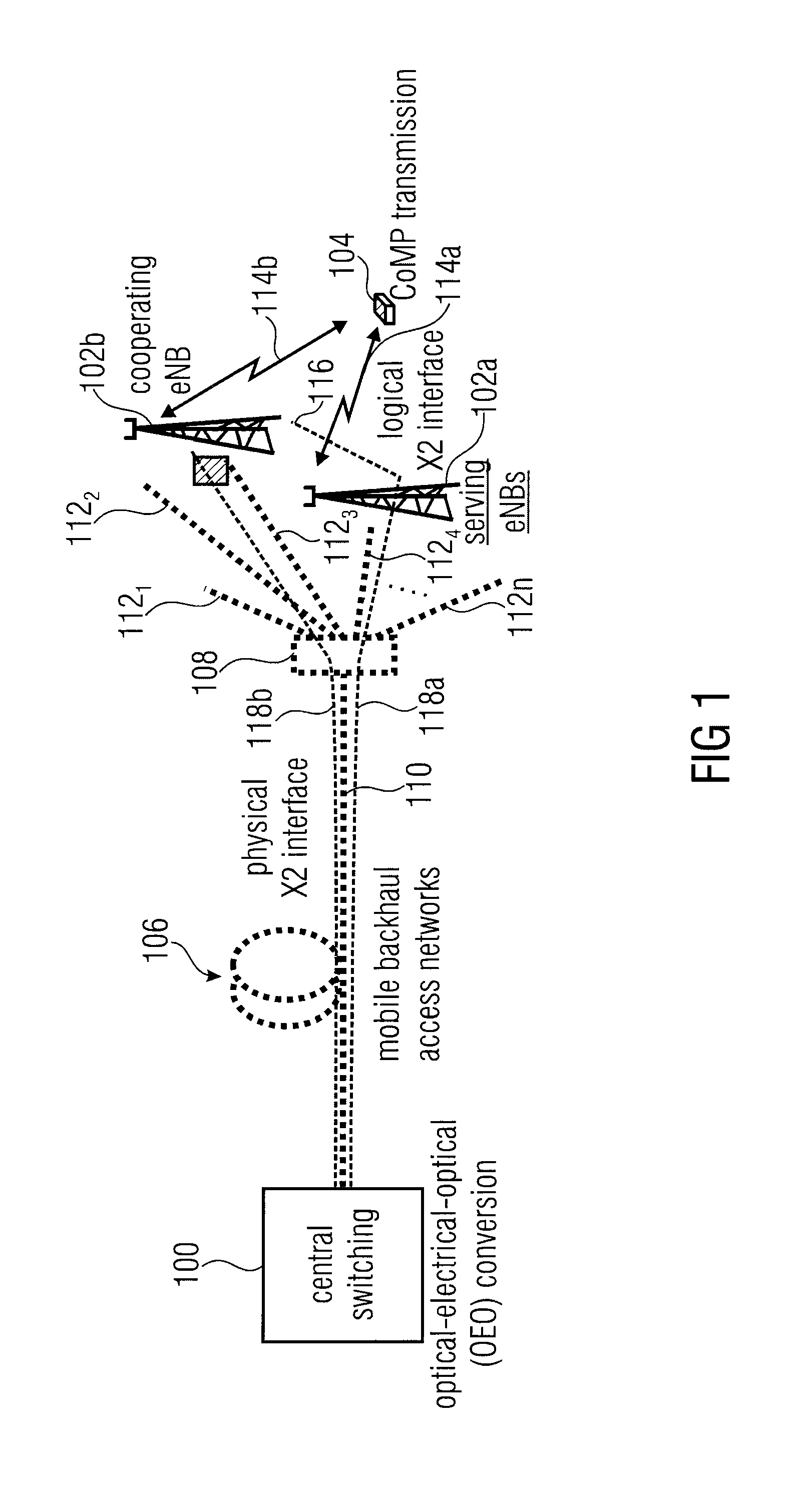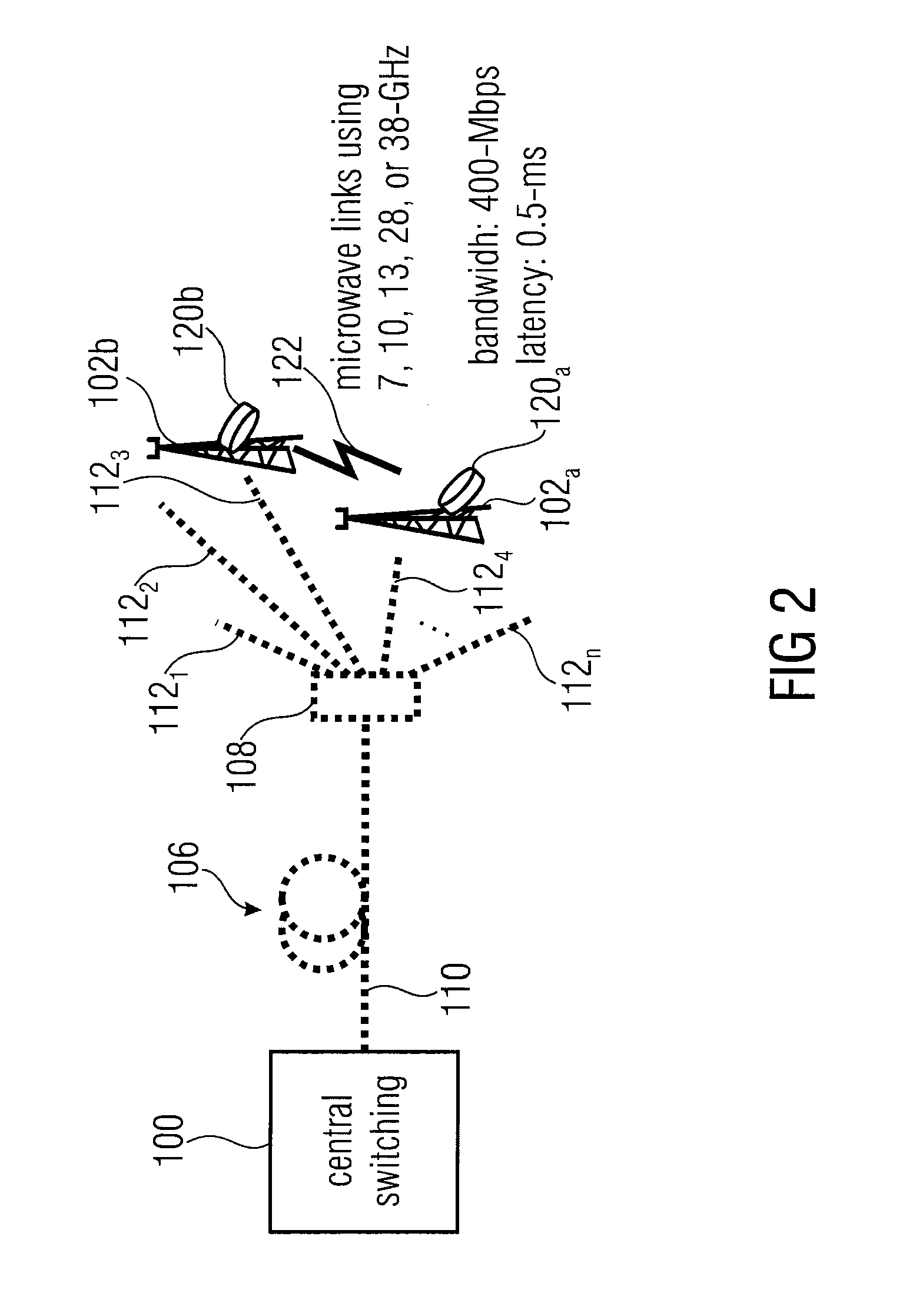Communication system and method for directly transmitting signals between nodes of a communication system
a communication system and communication system technology, applied in the field of communication systems, can solve the problems of large processing burden of the central gateway (the central switching unit b>100/b>), inability to meet the requirements of x2 interface latency and capacity, and limited bandwidth, so as to achieve higher user throughput, reduce latency, and increase capacity
- Summary
- Abstract
- Description
- Claims
- Application Information
AI Technical Summary
Benefits of technology
Problems solved by technology
Method used
Image
Examples
Embodiment Construction
[0051]On the basis of FIG. 3, the differences between a TDM-PON and a WDM-PON are discussed. FIG. 3A shows a schematic representation of a time division multiplexing passive optical network (TDM-PON). The TDM-PON comprises the central switching unit 100 (OLT=optical line terminal) and the splitter 108 coupled to the OLT 100 via the connection 110, which is a fiber optic connection. The splitter 108 is further connected to a plurality base stations (ONU=optical network unit) 1021 to 102n. Each of the optical network units 1021 to 102n is connected to the splitter 108 via a respective branch connection 1121 to 112n formed of respective optical fibers. The splitter 108 may be a 1:32 splitter, meaning that 32 different optical network units 1021 to 102n may be serviced, i.e. n=32. The TDM-PON operates in a wavelength range of 1260-1280 nm for the uplink or upstream connection, i.e. for transmitting data from one or more of the optical network units 1021to 102n to the optical line termin...
PUM
 Login to View More
Login to View More Abstract
Description
Claims
Application Information
 Login to View More
Login to View More - R&D
- Intellectual Property
- Life Sciences
- Materials
- Tech Scout
- Unparalleled Data Quality
- Higher Quality Content
- 60% Fewer Hallucinations
Browse by: Latest US Patents, China's latest patents, Technical Efficacy Thesaurus, Application Domain, Technology Topic, Popular Technical Reports.
© 2025 PatSnap. All rights reserved.Legal|Privacy policy|Modern Slavery Act Transparency Statement|Sitemap|About US| Contact US: help@patsnap.com



